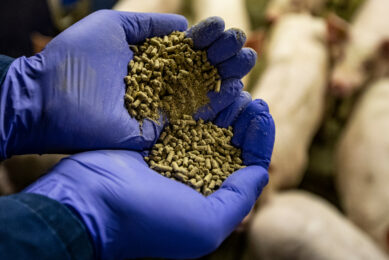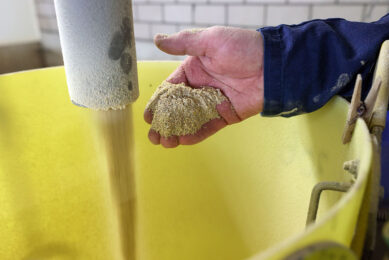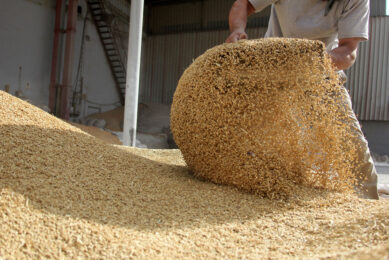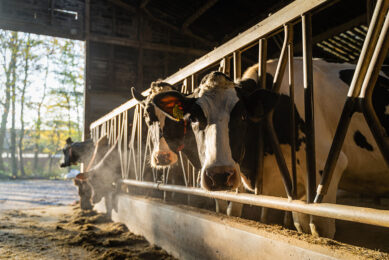Chinese feed industry is changed, but looking for ways to change
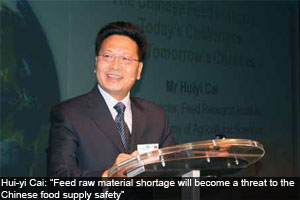
The gross domestic product of China shows a constant and rapid increase over the last decade, so does pork production, egg production and total meat consumption. Reason enough to believe that feed production is also in an upward stream. At Nutreco’s Agri Vision held in Noordwijk in June 2009, deputy president of the Chinese Feed Industry Association Hui-yi Cai outlined the future of the Chinese animal feed sector.
Graphs of Chinese production data over the last decade generally show a constant upward line. Here and there some hick-ups appear but these are only for short periods. No wonder that many exporting countries are eying China as the place to be for agriculture trade. Trading figures for animal products show that China is deficient in animal protein and that imports increase with a faster pace than exports. Feed and food company Nutreco, for its international Agri Vision conference held in June in Noordwijk, the Netherlands, invited Hui-yi Cai to outline the Chinese feed market. Cai, apart from being deputy president of the Chinese Feed Industry Association is also director of the Feed Research Institute of the Chinese Academy Agriculture Science and president of the Chinese Feed Industry Economy Committee. From his data it can be seen that China exported animal products in 2007 to a value of $404.5 million, which is an increase of 8.67% compared to 2006. Imports, however, were valued at $647 million, which was 42.2% higher than in 2006. This extreme increase has a lot to do with the dip in pork production in 2007.
The enormous demand for animal products translates into a steady increase in animal production, and as a result a steep increase in animal feed production. Since 2002 total manufactured animal feed production has more than doubled to 137 million tonnes in 2008, valued at 425.8 billion yuan ($62.33 billion, €41.95 billion). A constant increase in compound feed production is spurring this growth in feed production. According to Cai in 2008 Chinese compound feed production was 106 million tonnes. Concentrated feeds have remained constant since 2005 with 25.3 million tonnes in 2008. Premixes paralleled the compound feed growth and reached 5.5 million tonnes in 2008 (Figure 1). The majority of the feed is consumed by broilers and pigs (Figure 2). Ruminant feeds are insignificant in Chinese compound feed production.
Fewer feed mills
Like any country in development better efficiency goes hand in hand with restructuring of the industry. In China, the number of feed mills is in steady decline. In 2008 the country registered 13,612 feed mills, 1,764 or 11.47% fewer than in 2007. The number of privately owned and state owned mills is diminishing, while the number of mills established by foreign investment and stock holders is increasing (Table 1). This shows that foreign investors have definitely identified the potential of the Chinese market. Global players such as DSM, ADM, Cargill, Nutreco, and Charoen Pokphand already have a foothold in China.
Challenges
Cai identifies several challenges for the Chinese feed industry to overcome. “Sourcing raw materials is the most important challenge,” he tells his audience. “The demand cannot be met within China and the gap is filled by imports, mainly from Brazil, the US and Peru. The focus for imports is on protein; soy, soybean meal and fishmeal are increasingly important,” Cai continued. Regarding this situation, the Chinese government encourages the development of new crop varieties for animal feeds, such as maize, rice, wheat and cotton seed. How urgent the need for raw materials will become is best indicated by some figures. It is expected that China will have 1.6 billion people in 2030. To feed this population 743 million tonnes of grain are needed where only 710 million tonnes are expected to be available. In 2010 some 38% of land will be used for producing feed. This percentage will increase to 43% in 2020 and half of the Chinese surface will be needed in 2030 to grow a sufficient volume of grains. “Feed raw material shortage will become a threat to the Chinese food supply safety,” Cai stated. To counteract this looming animal feed shortage measures must be taken for increasing crop production. “It may never be possible to grow in China all the crops needed for feed because of limitations in land availability,” Cai said.
A measure the Chinese government has taken to increase the availability of raw materials is approving the use of genetically modified maize and soybeans. At the same time growing and converting crops into biofuel is no longer encouraged. Environmental pollution is another concern. “The animal industry must aim for environmentally long-term sustainable growth,” Cai said. He identified that livestock wastes, mostly manure, are a potential hazard to the environment in relation to water quality, soil degradation, air pollution and rural-urban issues. Animal excreta have become the third polluting source in China (+3 billion tonnes in 2005).
Safety of feed and food ingredients
Feed and food safety have also gained greater awareness in China, especially after the melamine scandal in milk and eggs in 2007, which gave the country a bad reputation and which was killing for consumer confidence. “The melamine scandal was a major incident and it took the dairy industry in China to the brink of collapse,” Cai said. “However, rapid responses, especially from the government, have brought the situation under control. To date in 2009 no milk or milk powder samples have tested positive for melamine.”
From this crisis the country learned that feed safety is an integral part of food safety. Since then new technologies are being used to check all raw materials and there are strict control measures in place throughout the feed-to-food value chains. “The National Quality Centre in China is gathering samples and analysing them for a wide range of potential contaminants. Feed producers are doing likewise,” Cai said. “As a result, consumer confidence in milk and meat has been restored and consumption will continue to grow.”
Chances for tomorrow
Although the outlook for animal feed is relatively gloomy for China, the fact is that demand is still rising. And this provides also opportunities. The population of China is expanding and is increasingly choosing to eat meat instead of grains. “Incomes are increasing and better food supply requirements will encourage the consumption of milk, meat and eggs, so the Chinese feed industry must keep speeding up new developments. Recent economic problems may have slowed these trends, but demand is still rising,” Cai said. Cai also identifies chances in the production of poultry feed. “Pig farmers traditionally have been the main feed market, but broiler production is growing faster with a higher volume than pig feed. Integrated farm systems play an important role in this development and they will continue to grow.” The government is encouraging feed industry enterprises to adopt professional standards and embrace industrial models. As a result farm scale will grow bigger and bigger. The government also stimulates the feed industry to adopt new high technology for manufacturing biofeed, non-polluting feed, no-residue feed and functional feeds, which need to be developed to overcome environmental pollution and at the same time, improve the quality of the animal products.




